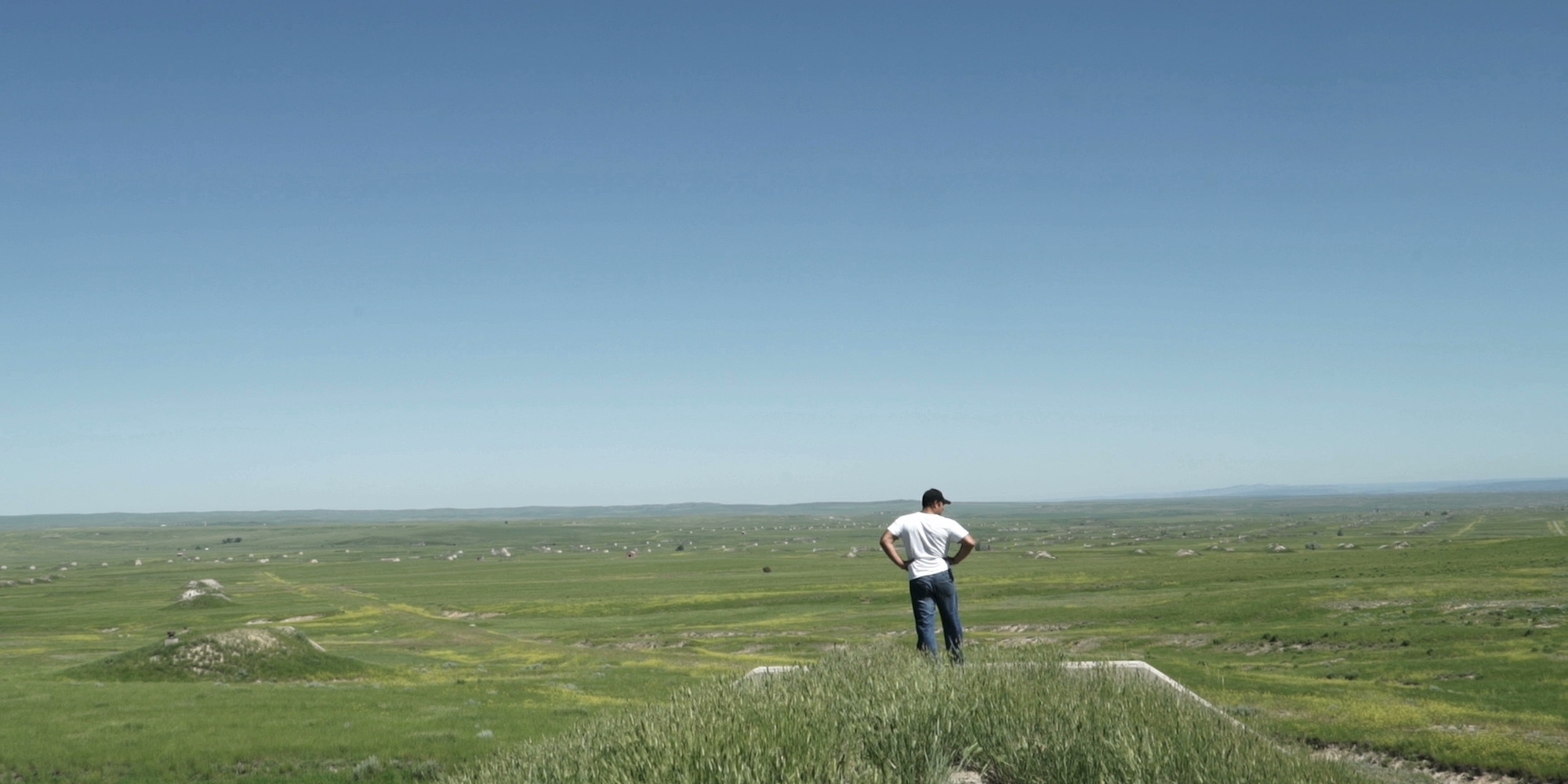
A Look at the Landscape of Our Time from a Hundred Feet Underground
Read an interview with artist Jenny Perlin, whose Bunker launches this year’s Doc Fortnight film festival.
Jenny Perlin, Sophie Cavoulacos
Feb 18, 2022
After an online hiatus, MoMA’s festival of nonfiction film returns to theaters. Running February 23 to March 10, Doc Fortnight 2022 presents 29 new documentaries and genre-defying hybrid films from around the world. The festival, now in its 21st edition, emphasizes the new, with many films available to audiences in the United States for the first time. On the big screen (and on our Virtual Cinema streaming platform for members), you’ll encounter urgent conversations, discover rising talents, and catch films at MoMA before they hit local theaters (or your streaming queue).
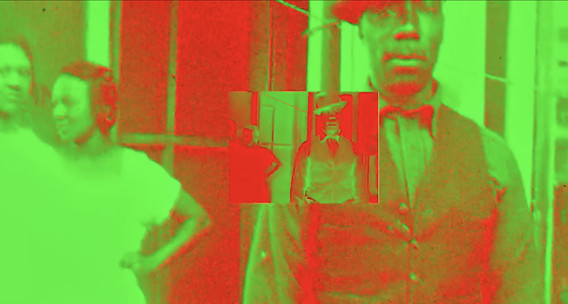
Crystal Z Campbell. Flight. 2021
As we put the finishing touches on this year’s festival, I am struck by an astonishing commonality across certain films. While speaking powerfully to the extraordinary times we are living in, these films originated long ago. The question of timeliness is a tricky one—you sure can’t plan prescience. What makes a film meet its moment, anyway? This intangible resonance is why we look to art, and to the resolve and insight of artists, for perspectives on the world.
I start to see time-lapse across the slate, from James Benning’s reprise of an early film to Claire Doyon’s retrospect of 18 years of recordings of her autistic daughter. Other ellipses are more melancholic, like Crystal Z Campbell’s reflections on the 1921 Tulsa Race Massacre or Hala Alabdalla’s portrait of her friend Omar Amiralay, the great director of political films, who, by a matter of weeks, didn’t live to see the 2011 revolution in his native Syria.
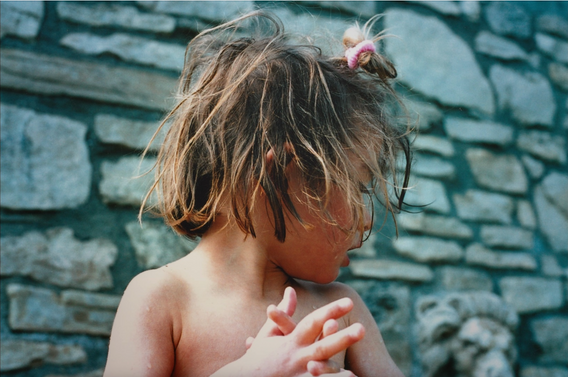
Pénélope Mon Amour (Penelope My Love). 2021. France. Directed by Claire Doyon
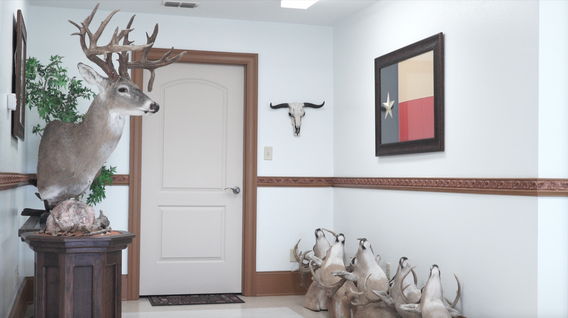
Bunker. 2021. USA. Directed by Jenny Perlin
Doc Fortnight’s opening-night film falls in this category, too. Screening in a New York premiere, Bunker brings together stories of men living in underground bunkers throughout the American Midwest. Interdisciplinary artist and filmmaker Jenny Perlin began shooting the film in 2018, traveling on her own to remote hideaways and decommissioned missile silos converted to luxury underground condos. Prompted by the election of Donald Trump and completed in the wake of a global pandemic, the film is an insightful and often surprising—and, yes, timely—study of attitudes toward shelter. Pointing to the intersection of the built environment and the future of our planet, Bunker also figures among films exploring ecology and environmental questions in this year’s program.
I spoke with Perlin via email ahead of the festival’s opening-night screening. Our interview is accompanied here by a presentation of the artist’s hand-drawn animation Each thing its place (available through March 10), which is also screening in the festival.
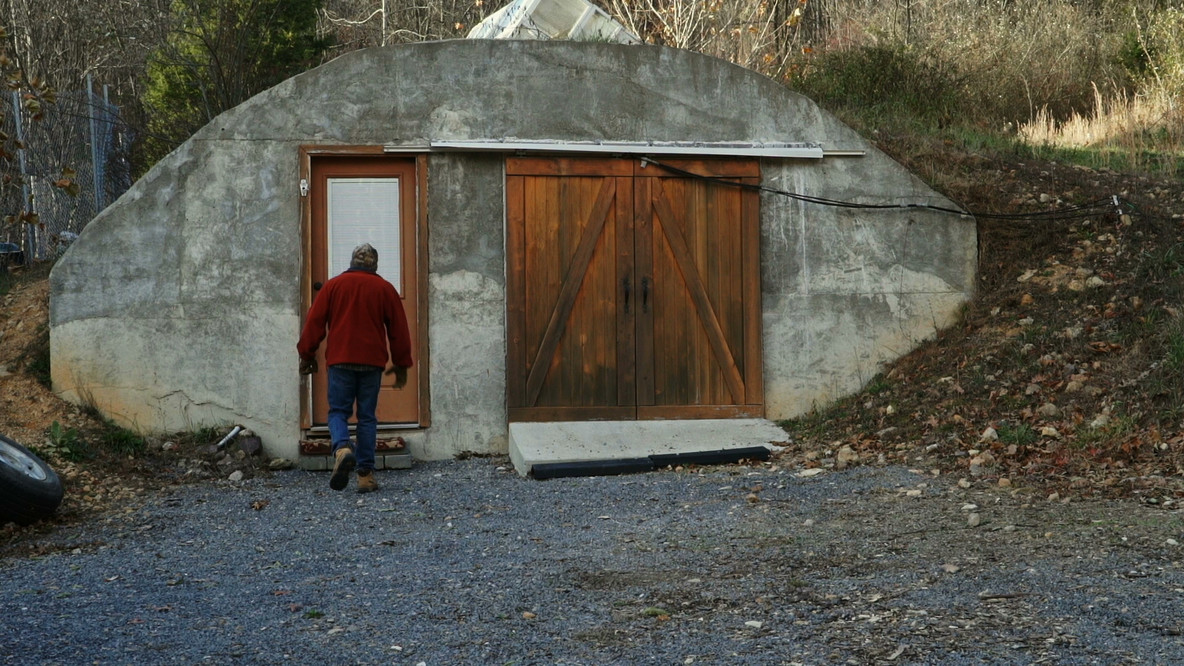
A still from Bunker
Sophie Cavoulacos: What was the starting point for Bunker? You mention it was in part about life in America under Trump. But what I am drawn to in your work is that there isn’t usually such a clear-cut answer.
Jenny Perlin: I’ve been interested in Cold War structures and their remnants for most of my life. Growing up in the Midwest I learned, later than I should have, that the Christmas tree farm we regularly visited overlooked a uranium processing plant disguised as a working dairy farm, and that the dry cleaner near my high school had been some kind of secret 1950s lab. I was always aware of the thousands of nuclear weapons buried in the landscape of my part of the country, and became interested in what might have happened to them. I began keeping track of real estate listings for missile silos and subterranean spaces. So the project was a long time in coming. When the Trump administration came into power, I was shocked but I also felt a sinking sense of familiarity. The furious sense of isolated self-reliance belongs to the earliest and most damaging narratives that underpin American history.
If I had to summarize the mood of the festival this year, it would be: how do human actions and ideas about how we should live together leave their mark on the natural environment and shape the built environment? That sounds like something you’ve been thinking about for a long time.
For the last decade I’ve been looking at the ways subterranean spaces allow for a kind of flexibility of form and how literally being underground allows for an unpredictability and interconnectedness that does not get mapped on the surface. As an interdisciplinary artist who gathers from a wide range of sources for my work, I find “underground” a useful way of thinking about how the things I’m interested in interrelate. With Bunker, the political discourse around “siloed” speech is presented physically to viewers. There is the speech, there are the men, and there is where they have chosen to live. In their effort to find freedom, they have put themselves into very isolated conditions. The landscape of the United States is riddled with these bunkers, silos, and tunnels that are both real and of the mind. I had become pretty tired of the coastal discussions of what the Midwest was like and who was living there. For that reason, I wanted to go to the Midwest to see people and hear their stories and experience their worlds.
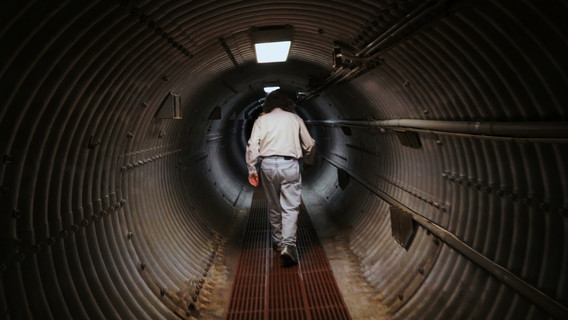
A still from Bunker
Jenny Perlin. Each thing its place. 2019
We’re so delighted you’ve agreed to give our readers a preview of Each thing its place, which we’re also screening in the festival. I wondered how you approach the different parts of your work. For you, is it cultural histories on one side, and animation on the other?
I conceive of my filmmaking as a braided process. While I work on something longer, I need to make smaller films and drawings and write essays and take pictures and do a lot of other things. While I was making Bunker, there were so many experiences and emotions and material living in me as I transcribed these hours of conversation and logged footage. I felt I needed to make animations responding to elements of my experience with each subject. The film Each thing its place is a response to my time spent with Milton Torres, who I filmed on his second day of full-time living at the VivosX bunkers in South Dakota. The images are from the first printed book on mining from the 1600s and the colors in the background are my interpretation of the colors of the landscape where I spent time with Milton. So to me there is no difference in the work, it is more that the films are different ingredients in the same project.
Doc Fortnight 2022, organized by Sophie Cavoulacos, Associate Curator, Department of Film, with Chandra Knotts, Filmmaker Liaison, screens February 23–March 10, 2022.
Related articles
-
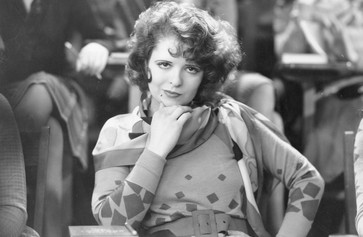
Dames, Janes, Dolls, and Canaries: Women Stars of Pre-Code Hollywood
The organizer of a new MoMA film series takes a fresh look at some lesser-known Hollywood luminaries.
Farran Smith Nehme
Feb 1, 2022
-
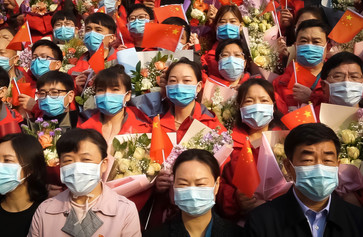
Inside the Early Days of the Pandemic in Wuhan and the US
Nanfu Wang’s acclaimed film In the Same Breath launches our 20th annual Doc Fortnight festival.
Sophie Cavoulacos
Mar 12, 2021

